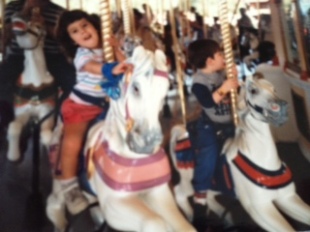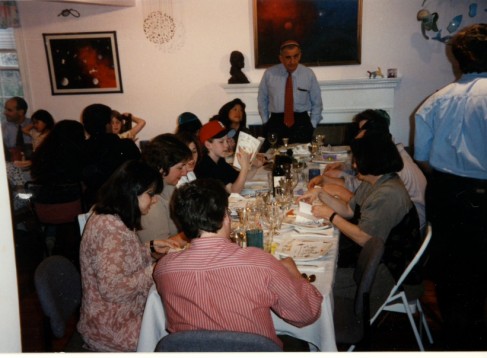“And the painted ponies go up and down
We’re captive on the carousel of time…”
Joni Mitchell, The Circle Game
For years this song has been an integral part of our Passover Seder. It comes right after we talk about the roasted egg and is one of the more poignant moments of the evening. I’ve learned to include Kleenex on our Seder Table because inevitably, several of the moms look longingly at their children, catch each other’s eyes and begin to tear up. Recently we had to add an additional verse since the children had outgrown the “and now the boy is 20” verse.
For years these words have symbolized the passage of time for me, as I think they do for many people. However, recently I wondered what else I could learn from these ponies. During the plane ride home from the Youth Engagement Conference in LA last month I began thinking of them in terms of Jewish Engagement.
So, how does my painted ponies vision work? Visualize a carousel, particularly one of those older, ornate carousels. A variety of ponies of all colors and shapes make up the whole. There are big ponies, smaller ponies; there are gilded ponies, spotted ponies, black ponies, white ponies, and red ponies. Some of the ponies stay in place some move up and down. You get the picture.
Here’s the thing. Many people enter through the snaking line, although some just jump on from anywhere. There are openings all over a carousel. One can enter and exit from many places. Regardless of where you enter, you can find a horse; you can find your horse. There is usually time to move from pony to pony as people sort out which pony they want to ride. Occasionally someone will get on a pony and then decide, for whatever reason, that isn’t the pony they want. They will dismount and find one that “fits them better”. After a few minutes of maneuvering, most people settle down.
At that point, the attendant usually comes around and makes sure everyone is set and ready for the ride.
The attendant comes around and checks in with everyone.
What if congregations used the painted pony approach to youth engagement? Although historically congregations have a school and/or a youth group, what if they provided multiple entry points? What if, rather than act as gatekeepers to protect existing programs, congregational professional and lay leadership acted more like attendants whose role is to make sure that the youth have opportunities to safely experiment with different experiences? What if the goal were to make sure that the youth were met wherever they entered and welcomed as full and whole individuals, not expected to leave parts of their selves at the door? What if a teen could take a short break to be in the school play and still be on track to participate in the next ride? What if congregations felt free to create programs and opportunities of different shapes and sizes for youth, without a value judgment on one over the other? And what if someone came and checked in, truly checked in, with each person who entered.
What if? What if? Just imagine the communities that could be created.
I love this image and want to explore it further, but one cannot host a Seder with song alone, so as I return to Passover Prep, I leave with the final words of the song ringing in my ear.
“There’ll be new dreams, maybe better dreams and plenty
Before the last revolving year is through.”
This post has been contributed by a third party. The opinions, facts and any media content are presented solely by the author, and JewishBoston assumes no responsibility for them. Want to add your voice to the conversation? Publish your own post here. MORE




